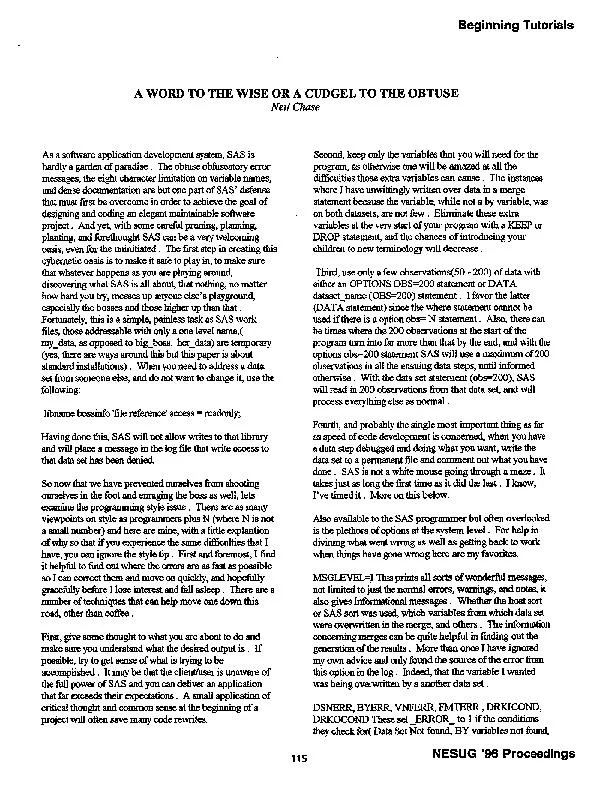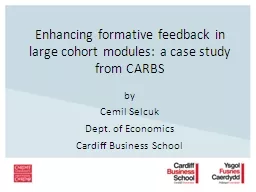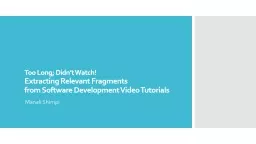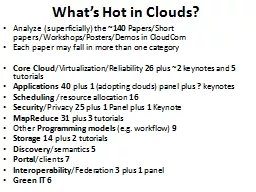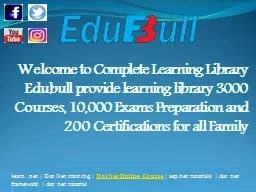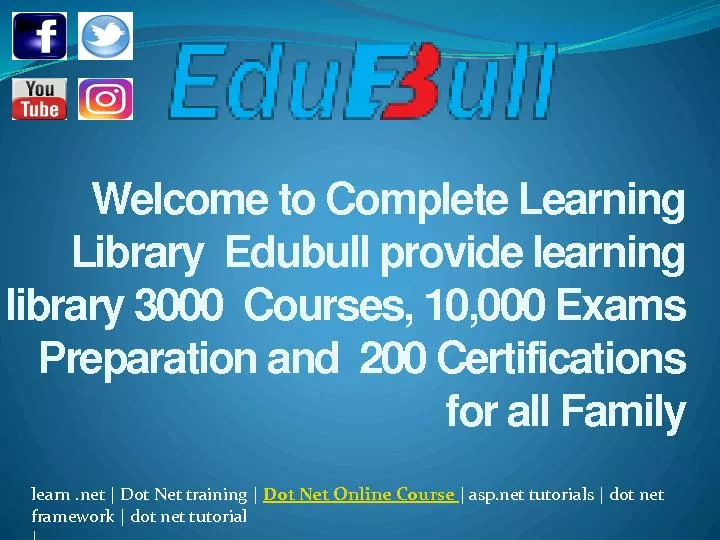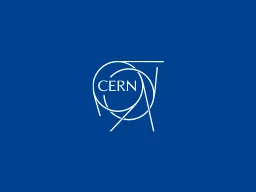PPT-Tutorials on Data Management
Author : dudeja | Published Date : 2020-06-29
Lesson 3 Data Management Planning CC image by Joe Hall on Flickr What is a data management plan DMP Why prepare a DMP Components of a DMP Recommendations for DMP
Presentation Embed Code
Download Presentation
Download Presentation The PPT/PDF document "Tutorials on Data Management" is the property of its rightful owner. Permission is granted to download and print the materials on this website for personal, non-commercial use only, and to display it on your personal computer provided you do not modify the materials and that you retain all copyright notices contained in the materials. By downloading content from our website, you accept the terms of this agreement.
Tutorials on Data Management: Transcript
Lesson 3 Data Management Planning CC image by Joe Hall on Flickr What is a data management plan DMP Why prepare a DMP Components of a DMP Recommendations for DMP content Example of NSF DMP. brPage 1br Beginning Tutorials brPage 2br Beginning Tutorials brPage 3br Beginning Tutorials brPage 4br Beginning Tutorials brPage 5br Beginning Tutorials brPage 6br Librarians as actors in. video tutorials. An. Allie Verbovetskaya. Presentation. Plan. Mimic Google’s “Teach Parents Tech” campaign. Keep videos under 1 minute. Give students option to watch videos now or later. Sue Leibold. Library Director. Clarke University. Build It and They Will Come. Courtesy of : Field of Dreams http://www.imdb.com/title/tt0097351/. Paper Form Used . Mentioned in Library Instruction. Beginning Tutorials Variable Not found, Drop Rename Keep Input/Output not found). As a group these are useful for tracJcing typos and those non-compos mentus moments. ERRORS=lO Sets the number or full by. Cemil. . Selcuk. Dept. . of Economics. Cardiff Business School. Outline. Rankings: Feedback is a major issue.. This project: a controlled experiment. Survey results and some analysis. Bristol, Cardiff, Lancaster. !. Extracting . Relevant Fragments. from Software Development Video Tutorials. Manali Shimpi. Overview. Background. Introduction. CodeTube Overview. Crawling and Analyzing Video Tutorials. Identifying Video Fragments . What is Spooky?. Is it a thing we can see?. Is it a thing we can feel?. What does it look like?. What is a. concept. ?. Is the . concept. of spooky . objective. or . subjective?. What is NOT Spooky?. technology behind a . library badges program. J. Lindsay O’Neill. Instructional Design Librarian. Faculty, M.S. Instructional Design & Technology. California State University, Fullerton. Slides: . Analyze (superficially) the . ~140 . Papers/Short papers/Workshops/Posters/Demos in . CloudCom. Each paper may fall in more than one category. Core. . Cloud. /Virtualization/Reliability . 26. plus ~. Edubull provides online Dot Net Course. Dot Net training includes .Net Curriculum, Visual .Net, dot Net Basics, Framework, along with Online learning app, dot net framework and Asp Dot Net Video Tutorials Edubull provides online Dot Net Course. Dot Net training includes .Net Curriculum, Visual .Net, dot Net Basics, Framework, along with Online learning app, dot net framework and Asp Dot Net Video Tutorials . Structured Query . Language. Eva Dafonte P. érez (IT-DB). Oracle Tutorials 2013: SQL. Agenda. Goal. Understand basic . SQL capabilities. Being able to write a SQL query. Outline. SQL overview . Available statements. Lesson . 2. : Data Sharing. Photo by Michelle Chang. All Rights Reserved. Data Sharing Within the Data Lifecycle. Value of Data Sharing. Concerns About Data Sharing. Methods for Making Data Sharable. Dept of Plant Pathology. What is a Tutorial? (in Education). A method of transferring knowledge. Can be used as a part of the learning process . Tends to be more interactive and specific than a lecture, notes, or a book .
Download Document
Here is the link to download the presentation.
"Tutorials on Data Management"The content belongs to its owner. You may download and print it for personal use, without modification, and keep all copyright notices. By downloading, you agree to these terms.
Related Documents




